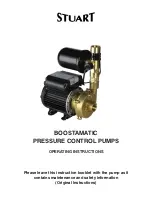
5
WARNING
Always use the collet which matches the shank size
of the accessory you plan to use. Never force a large
diameter shank into a collet. The accessory should
fi t smoothly into the collet, but you should be able to
tighten the accessory fi rmly and securely with the
provided wrench.
DANGER
If you are changing an accessory immediately after
use, be careful not to touch the collet, collet nut, or
the accessory with your hands or fi ngers. You will
get burned because of the heat build-up from cutting.
Always use the wrench provided.
INSTALLING ACCESSORIES
See Figures 4 - 5.
Unplug the rotary tool.
Press and hold the spindle lock, and rotate the shaft
by hand until the spindle lock engages the shaft,
preventing further rotation.
With the spindle lock engaged, use the collet wrench
to loosen the collet nut, if necessary.
Insert the shank of the accessory into the collet until
the shank bottoms out, then pull it out 1.6 mm (1/16 in)
to allow for expansion when the accessory gets hot.
With the spindle lock engaged, tighten the collet nut
with the provided wrench until the accessory shank is
gripped by the collet. Avoid excessive tightening of the
collet nut.
REMOVING ACCESSORIES
See Figures 4 - 5.
Unplug the rotary tool.
With the spindle lock engaged, loosen the collet nut
with the provided wrench.
Remove the accessory.
USING MANDRELS
See Figures 6 - 8.
The most common types of mandrel to use with this tool
are the standard mandrels which are used with cut-off
discs, grinding wheels, emery wheels, and cut-off wheels.
Screw mandrels are used with polishing wheels and
polishing drums. Drum mandrels are used with sanding
drums.
To install:
Unplug the rotary tool.
Install the mandrel.
If using the standard mandrel:
Press and hold the spindle lock.
Insert the slot end of the provided wrench into the slot
on top of the mandrel and unscrew.
Remove mandrel screw and washer.
Place desired accessory over mandrel shaft and align
accessory hole with mandrel hole.
Insert mandrel screw with washer through the
accessory and mandrel shaft holes.
NOTE:
The mandrel washer should be placed between
the mandrel screw and the accessory.
Tighten using provided wrench.
If using the screw mandrel:
Align desired accessory hole with mandrel screw
head.
Screw accessory onto mandrel by twisting clockwise
until secured.
If using the drum mandrel:
Align appropriately sized sanding drum over mandrel
and push down to completely cover drum end of
mandrel.
NOTE:
If necessary, tighten the screw on the drum
mandrel head to expand the drum and securely hold the
sanding drum in place.
BALANCING ACCESSORIES
For precision work, it is important that all accessories
be properly balanced. To balance an accessory, slightly
loosen the collet nut and give the accessory or collet a
1/4 turn. You should be able to tell by the sound and feel
if the accessory is running in balance. Continue adjusting
in this fashion until the best balance is achieved. Replace
accessories if they become damaged or unbalanced.
SELECTING THE RIGHT SPEED
See Figure 9.
The rotary tool has a speed range of 10,000 to 35,000
RPM. To select the right speed for each job, use a practice
piece of material. Vary speed to fi nd the best speed for the
accessory you are using and the job to be done.
Use the indicator mark above the speed control dial to
set the best speed for the job. The speed control dial is
numbered 1 to 5 and MAX. For example, a speed setting
of 1 is approximately 10,000 RPM, and a speed setting of
MAX is approximately 35,000 RPM.
Refer to the speed dial settings table to determine the
proper speed based on the material being worked and the
type of accessory being used.
SLOWER SPEEDS
Certain materials, some plastics for example, require a
relatively slower speed because the friction of the tool
generates heat and causes the plastic to melt at high
speed.
Slow speeds (15,000 RPM or less) are usually best for
polishing operations using the polishing accessories. They
may also be best for working on delicate projects, delicate


































